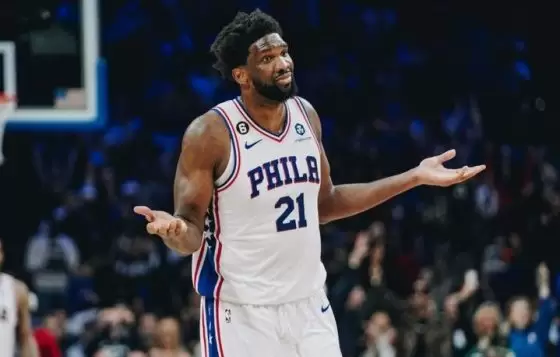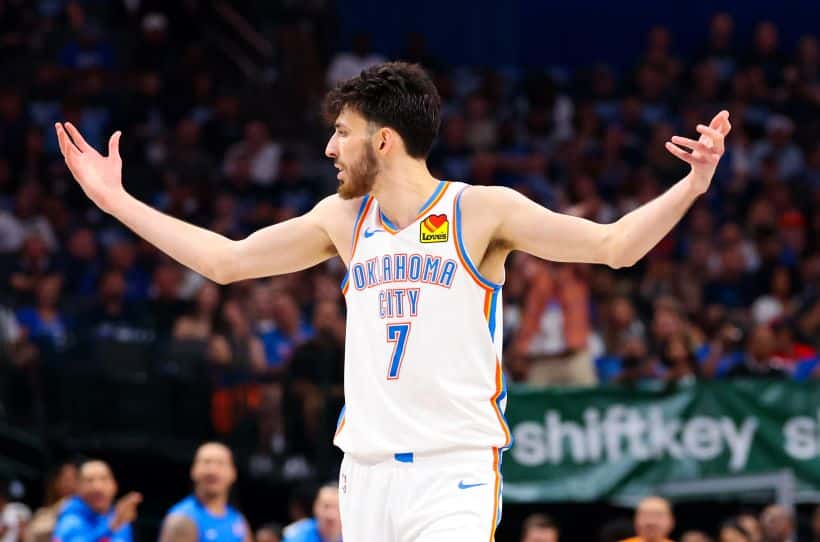Key Highlights
When Doc Rivers was head coach of the Philadelphia 76ers, he harped on the idea of repeatedly running a play until the defense proved they could stop it. A simple enough thought and one that likely reverberates throughout the minds of coaches across the NBA. If it ain’t broke, don’t fix it, basically.
For as multifaceted as the Thunder’s offense can be, that’s a notion they also seemingly subscribe to. They layer in some complex sets around a straightforward philosophy — drive the ball, move well off of it and spread shooters around the perimeter — amplified by shrewd counters, pristine execution and elite personnel.
They’ve rampaged across the first 2.5 months of the season, sitting second in the West at 23-9, touting a fifth-ranked offense and sixth-ranked defense. Most title contender lists rightfully include Oklahoma City.
What render its pastures so green is the rare meld of short- and long-term prosperity. Championship windows are fleeting and predicting the league’s future is a futile endeavor. But if any team is positioned as a title hopeful both today and half a decade from now, the Thunder would probably be the prime candidate (although, I wouldn’t count out the Denver Nuggets).
Their cornerstone trio of Shai Gilgeous-Alexander (25 years old), Chet Holmgren (21) and Jalen Williams (22) fuel this optimism.
Gilgeous-Alexander is a bona fide MVP candidate who’s chiseling, shimmying, bobbing and weaving his way through the heart of any defense he encounters.
In his rookie season, Holmgren is already garnering All-Star and All-Defensive Team recognition with his shooting, rim protection and off-the-bounce boogying.
Williams is probably a bit south of All-Star candidacy this year, but his buttery two-way chops and fourth quarter takeovers make clear he’ll have plenty of chances over the next decade.
Not only are they flourishing individually, it’s a group that gracefully complements one another and does not step on each other’s toes. Whether it be positional overlap or incongruent play styles, some star combinations do not mesh to the utmost degree and result in diminishing returns. That’s not the case with them.
Why Do The Thunder’s Stars Play So Well Together?
Throughout the year, the Thunder have frequently dialed up pindown/flare screens (depends on the angle of the screener, really) for Holmgren, deploying either Williams or Gilgeous-Alexander as the pick man. It typically works because centers are wired to sag off and protect the paint, particularly against such a prolific driving team like Oklahoma City, which ranks first in drives (61.6) and points off drives (36.7) per game.
Holmgren’s shooting (40.7 percent beyond the arc) exploits that line of thinking, playing off the gravity of his teammates and flipping conventional wisdom on its head. With Josh Giddey at the helm, here he is catching a pair of Phoenix Suns center off-guard in mid-November for six easy points.
The Suns got burned by the exact same play for a trailing Chet Holmgren 3 in the first 5.5 minutes last night pic.twitter.com/oiP0N8P7QX
— Jackson Frank (@jackfrank_jjf) November 13, 2023
Whereas natural instinct usually gives Holmgren a runway for these looks, Rudy Gobert and the Minnesota Timberwolves‘ top-ranked defense do not lean into natural instinct. When Minnesota and Oklahoma City battled on Nov. 28, a 106-103 win for the Timberwolves inside Target Center, Gobert was ready.
They crowded Holmgren, pressured his touches and closed down his airspace. The rookie phenom scored 16 points on 6-of-20 shooting. He and his Thunder pals rarely enjoyed the type of real estate and success that play call lends them.
Four weeks later, Oklahoma City rollicked to a 129-106 win over the 24-9, West-leading Timberwolves. The synergy and versatility of its Big Three were on display, broadly and via this specific set.
Midway through the first quarter, Gobert is above the arc, eyes toggling between his man, Holmgren, and Gilgeous-Alexander, an omnipresent scoring and slashing threat. Williams comes jogging in, immediately transitioning from nonchalant cadence to bruising screen.
Gobert sees the pick and swiftly fights around it, but Holmgren is already in motion. He engages Karl-Anthony Towns, pump fakes to draw him off his feet — prompting Gobert to shade help against a potential give-and-go — and swings a pass to Williams (a 43.5 percent three-point shooter this year), who drills the spot-up rep.
Minnesota’s defensive shell crumbled because of a momentary lapse 45 feet away from the rim. That’s the constant pressure the Thunder apply and leverage from all three stars.
Seventeen minutes later, the same scenario arises. Gilgeous-Alexander is piloting the offense near the left wing, Holmgren is trailing to his right and Williams is mashing toward a screen for the 7-foot sniper. Gobert tracks all of this. His eyes are darting between man and ball at a quicker rate. Holmgren is not going to beat them this time.
Gilgeous-Alexander sees the events unfolding a few feet away and recognizes the paint is vacated because of the respect Holmgren commands from Gobert So, he seamlessly turns on the accelerator, bounces Nickeil Alexander-Walker out of the picture and converts an easy layup, reaping the benefits of a perimeter-oriented big who lures rim protectors away from the hoop.
Everyone flanking Gilgeous-Alexander above is nailing at least 40 percent of their long balls in 2023-24, including Luguentz Dort (41.8 percent) and Isaiah Joe (42 percent). While neither of their defenders stood a chance to rotate in a timely manner, the off-ball shooting Oklahoma City touts — leading the league in three-point percentage (40.3) — further eases life for its offensive centerpieces.
In most scenarios, Joe’s man, Mike Conley Jr., would be responsible for help inside, which requires abandoning Joe, who’s netted 41.2 percent of his 568 threes since joining the Thunder prior to 2022-23. It’s an arduous spot to navigate! Oklahoma City owns the No. 1 half-court offense (107.5 offensive rating) because of dichotomies like that.
Shortly after intermission, the Thunder return to the well, this time with Williams running the show and Gilgeous-Alexander screening for Holmgren. By virtue of clashing lineup compositions, Williams is Oklahoma City’s slippery, 6-foot-5 power forward being guarded by Minnesota’s jumbo, 7-foot power forward, Towns.
To account for that, Gobert and Jaden McDaniels direct some of their attention toward this mismatch in case Williams, an accomplished driver and creator, elects to attack. They don’t switch the screen. Gobert, worried about an open three, is slow to fight over it — as any center would be, emphasizing the strain Holmgren’s game presents — and grants Holmgren a path inside off the catch. McDaniels tries to draw a charge, but isn’t quite set and Holmgren heads to the free-throw line.*
*Initially ruled a charge on the floor, the call was overturned after Oklahoma City challenged it.*
Less than a minute later, Minnesota switches to zone — a tactic it used to stymie the Thunder in the first matchup. Williams is operating again from the right wing. Conley and McDaniels are pinched in. Gobert is patrolling the middle of the floor. Gilgeous-Alexander occupies McDaniels with the most ceremonial of flare screens. Anthony Edwards is late rotating up. Holmgren steps into a shooting practice bucket for his second of three triples.
It’s the exact outcome this action is designed for and Minnesota first aims to prevent with its coverage. The cycle has come full circle. The Thunder are winning the war of counters, as they often do.
This is the bind Oklahoma City’s offense corners opponents into on a nightly basis. There is nothing groundbreaking with that action, yet every team struggles to bottle it up because of who is involved.
Siphon off Holmgren and an opportunity for a devastating driver appears. Skirt him off the line and the fluid three-level scorer taps into his ball-handling chops with the center in his rearview mirror. Double him on the catch and the screener morphs into an elite release valve. Sit back to deter Williams or Gilgeous-Alexander’s downhill forays, and a 40 percent marksman revels in target practice.
Those are the choices defenses must decide among with virtually everything the Thunder run. Gilgeous-Alexander, Williams and Holmgren are a circulatory system. That action and the entire offense flows concordantly because those three operate with a necessary, symbiotic harmony. It’s how Oklahoma City became so good so fast and why it’ll probably continue ascending the league’s hierarchy in the coming years.






